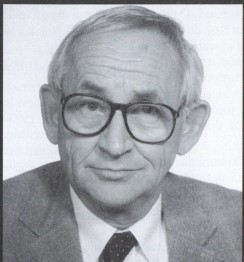András Baranyi
Between 1960 and 1963, he was a scientific associate at the Microwave Department of the Telecommunications Research Institute (TKI). Between 1971 and 1973, he was a scientific advisor at the Systems Theory Department, and from 1973, he was a department head at the Computer Science Department. He worked at the TKI for a total of 36 years, and then at the General Communications Authority until his death.
Meanwhile, from 1965 he was a lecturer in microwave engineering at the Faculty of Electrical Engineering (VIK) of the Budapest University of Technology (BME); from 1968 he became a scholarship aspirant of Sándor Csibi; meanwhile (1970–1971) he was a visiting researcher at the Faculty of Electrical Engineering of the University of Maryland in the United States. He defended his dissertation in 1976. In 1981 he worked as a visiting researcher at the University of California (Berkeley); later also at the University of Maryland. He became an honorary associate professor of BME.
He worked on the development of data transmission modems, modeling of transistors and diodes, network theory of nonlinear circuits, and the development of IF (medium frequency) circuits for microwave systems; he was the developer of the first transistor amplifiers for semiconductor microwave equipment.
He registered two patents (in 1972 and 1974). The number of his scientific publications - in Hungarian and English - approached one hundred.
In 1974, he and researchers from the First Department of Internal Medicine of Semmelweis University of Medicine (SOTE) developed a computerized classification procedure for diagnosing diabetes.
From 1991 until his death, he was the editor-in-chief of the journal Híradástechnika.
In the last phase of his career, he played a significant role in the Hungarian research on space communication systems of the Intercosmos program. He and his colleagues collaborated in the development of a new telecommunications device called Intersat (which was used in the Intersputnik system). In 1977, he participated in the design work of the only Hungarian ground space communication station built in Taliándörögd.
Awards: Order of Merit for Work; Excellent Inspiring Award; Virág-Pollák Award (Hírkocommunications and Informatics Scientific Association, HTE); Tivadar Puskás Memorial Medal (HTE, 1986); HTE Gold Badge; Academic Award (MTA, 1990).
Created: 2021.01.28. 17:44
Last modified: 2024.12.14. 17:32

